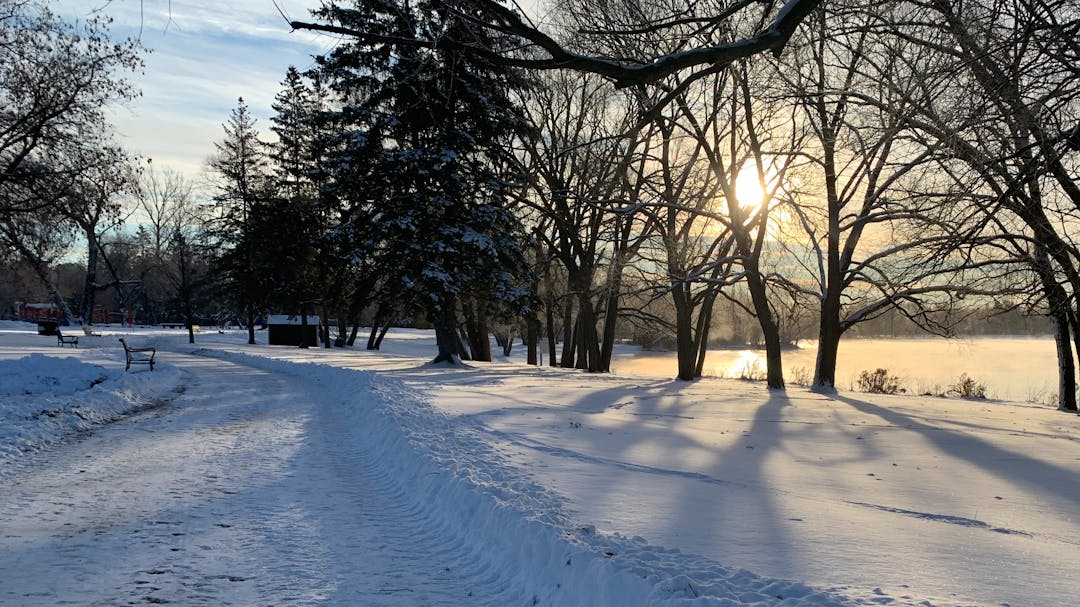Cambium was retained in May 2017 to assist the City with the submission of an application for an Environmental Compliance Approval (ECA) to the Ministry of the Environment, Conservation and Parks (Ministry), which was required for the existing culverts located at the Snow Storage Facility on Kennedy Road in Peterborough.
The snow storage facility area is approximately 0.6 ha located within the larger property of the Peterborough WWTP (13.2 ha) located at 425 Kennedy Road, Peterborough, Ontario. The Site is owned and operated by the City of Peterborough and located approximately 1.2 km south‐southeast of downtown Peterborough. It is situated within the urban fringe area of the City of Peterborough and is surrounded by major roadways and residential development.
The snow storage facility area is about 125 m southeast of the Otonabee River. The woodlot is situated adjacent to the west of the Site. To the north and east of the Site lies the WWTP, beyond which the land use is primarily residential. South of the Site is a small vegetated strip followed by Highway 7/115, running east to west.
The woodlot is a small patch of mixed vegetation between the Site/WWTP and the shore of the Otonabee River. This wooded area is approximately 0.3 ha in area. According to the Ecological Land Classification System for Southern Ontario (ELC; Lee et. al, 1998), this wooded area is classified as a Fresh – Moist Ash Lowland Deciduous forest type, which is a terrestrial community.
To redirect the on-site drainage from travelling overland through an adjacent woodlot (Kennedy Road Woodlot) where a number of dying trees were observed, the City completed grading (including berms and ditches) and installed three culverts in the vicinity of the Site to direct run off from the Site to the Otonabee River, along the southern property boundary of the Site. These drainage works were completed to restrict the flow of run-off from draining through the Kennedy Road woodlot via overland flow. The following was outlined by the Ministry inspector following a site visit to the snow storage area in April, 2017:
“The Ontario Water Resources Act (OWRA) defines sewage as drainage, stormwater, commercial wastes and industrial wastes and such other matter or substance as is specified by the regulations. The establishment of berms and culverts for the collection and transmission of the sewage is deemed to be a sewage works. Sewage works are defined as any works for the collection, transmission, treatment, and disposal of sewage or any part of such works.
Section 53 of the OWRA states “Subject to section 47.3 of the Environmental Protection Act, no person shall use, operate, establish, alter, extend or replace new or existing sewage works except under and in accordance with an environmental compliance approval.”
As noted in the Ministry correspondence to the City, given that the sewage works were established without the required approval in accordance with Section 53 of the OWRA, the City was required to submit a complete application, including the appropriate fees. The Ministry noted that the application was to propose methods to reduce contaminants present in the sewage and that there will be a requirement for effluent sampling.
In response to the above correspondence, Cambium developed a scope of work in the form of an Action Plan that was submitted to the Ministry.
As outlined in the Action Plan dated March 29, 2018, initially it was thought that the existing control structures (culverts, etc.) could continue to be used for quantity control of the melt waters, and additional engineered structures would be required for quality controls. As such, it was proposed to complete design calculations and culvert sizing determinations to ensure the existing structures were suitable. It became apparent early in the project that a more significant SWM system would be required. Initial discussions and assessments indicated that a SWM pond would be suitable to address both quality and quantity issues; however, the location of the pond was uncertain.
Previous Work
Cambium reviewed the following documentation, provided by the City and/or sourced from publicly available documents:
- Soil sampling
- Assessment of woodlot
- Topographic surveys
- Aerial photography
- Annual surface water and soil sampling
- Salt Management Plan
- Forest Management Plan (in partnership with ORCA)
- Several City Reports including Snow Disposal Site Selection Reports, Committee Reports, etc.
Cambium and several City staff met on-site on September 26, 2017 to discuss this project with a number of City Councillors and concerned residents. During this meeting Cambium was able to gain a detailed understanding of the work and studies completed to date by the City in the adjacent woodlot (e.g., soil and water testing, Ash Borer studies and treatments, topographic surveys, etc.). Cambium also reviewed the grading and culvert work completed, with staff from the City Public Works department. Lastly, Cambium was provided background from residents, including a photographic history of the changing woodlot over time.
Preliminary Alternatives Evaluation
On-site measurements and preliminary design calculations were completed to determine the size of the stormwater pond that would be required. It was proposed that a pond be constructed on the lands adjacent to the woodlot and Site, currently owned by the Ministry of Transportation of Ontario (MTO). The design work for this location was completed in February 2018; however, following discussions with representatives from the MTO, the City, and Cambium on April 19, 2018, it was clear that the MTO would not allow the City to either lease or purchase the lands required for the pond. As such, the City and Cambium were left with the assessment of the options of the construction of a SWM pond on City owned lands, west of the snow storage area, or the use of a permanent snowmelter at the snow storage site with redirection of the melt water through the WWTP. The use of an impermanent snowmelter located within the City core, with discharge of the melt water to the City storm sewer infrastructure, was later added as an option.



